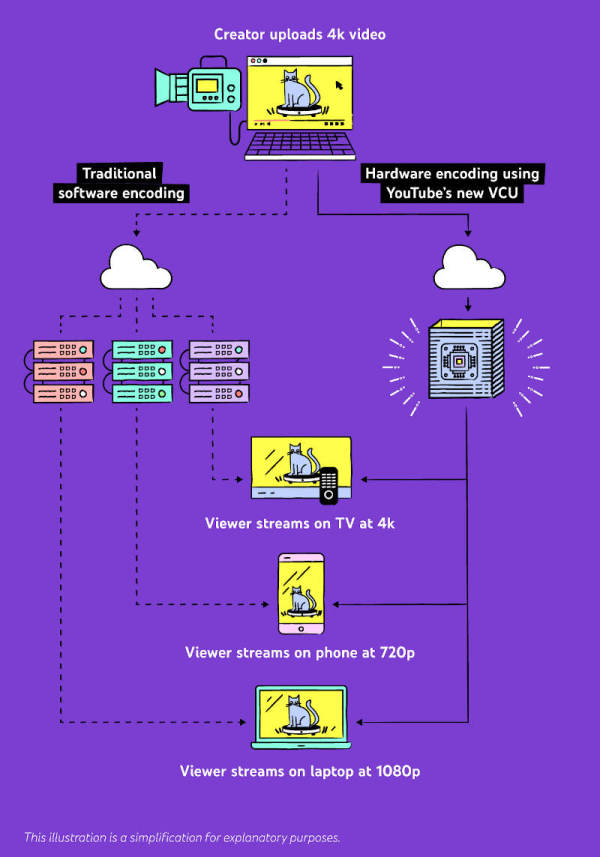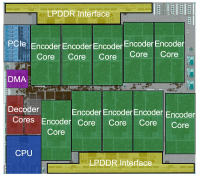[15:16 Fri,23.April 2021 by Thomas Richter] |
On average, 500 hours of new video material are uploaded to YouTube every minute, which must be immediately encoded for the various devices, from smartphones to PCs to TVs, on which it is viewed, a variety of different delivery formats (with different resolutions and codecs). How does YouTube manage to compress this massive amount of video shortly after upload?  Old and new YouTube encoding infrastructure compared Until recently, server farms handled compression via software, but YouTube has recently switched to transcoding using specially developed, highly specialized hardware ASICS and associated software, which have been combined into so-called transcoding brains, the Video (trans)Coding Units (VCUs). As a result, YouTube achieved a 20- to 33-fold acceleration in computing power compared to previous transcoding systems, which were implemented only via optimized software on conventional servers.  YouTube&s Argos VCU transcoding PCIe card Especially if the video codec used is particularly efficient, this also means a greatly increased effort for compression - for example, the free VP9 codec is up to five times more expensive to encode than the H.264 codec. For YouTube, the effort is worth it, since the encoding only has to be done once and data can then be saved for each delivery. The situation is similar with the open AV1 codec, which is already being used by YouTube on a trial basis Since 2015, a team of 100 developers has therefore developed the first generation of the so-called Argos chip, which can compress H.264 and VP9 via hardware. Currently, work is already underway on the second Argos generation, which will also be able to handle the newer AV1 code.  YouTube&s Argos VCU transcoding PCIe card Each Argos chip has a decoding module for decompressing the source video and 10 encoding cores for compressing the target formats - two Argos chips are mounted on each specialized large PCIe Gen3 x16 plug-in card. For each source clip, 10 to 15 compressed variants are generated for streaming - for example, an 8K video is transcoded into 9 versions with 144p, 240p, 360p, 480p, 720p, 1080p, 1440p, 2160p as well as 4320p. A detailed description of the technique used can be found in this paper: Bild zur Newsmeldung:
deutsche Version dieser Seite: Wie komprimiert YouTube seine Videos? Per selbstentwickeltem Argos Transcoding-Chip |






